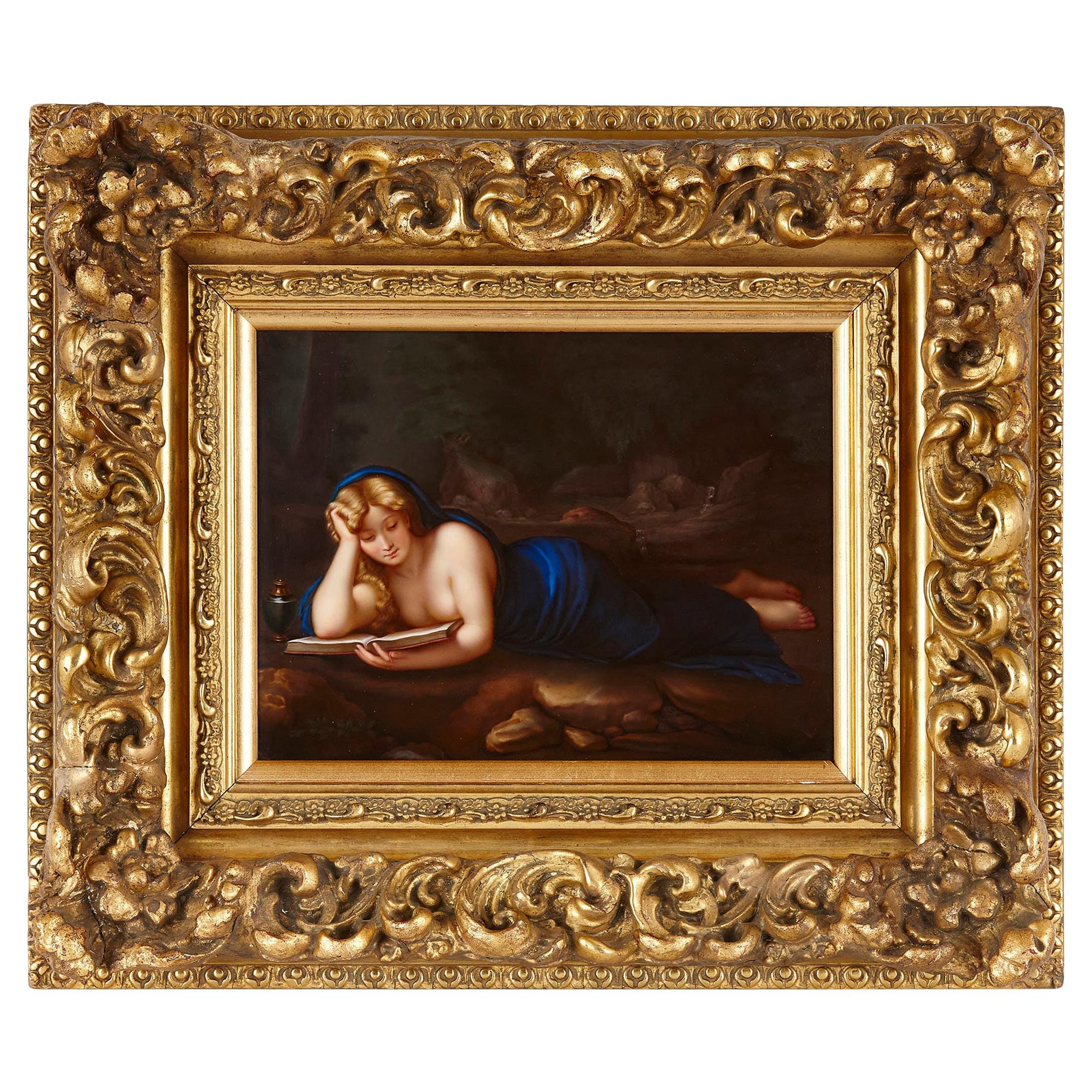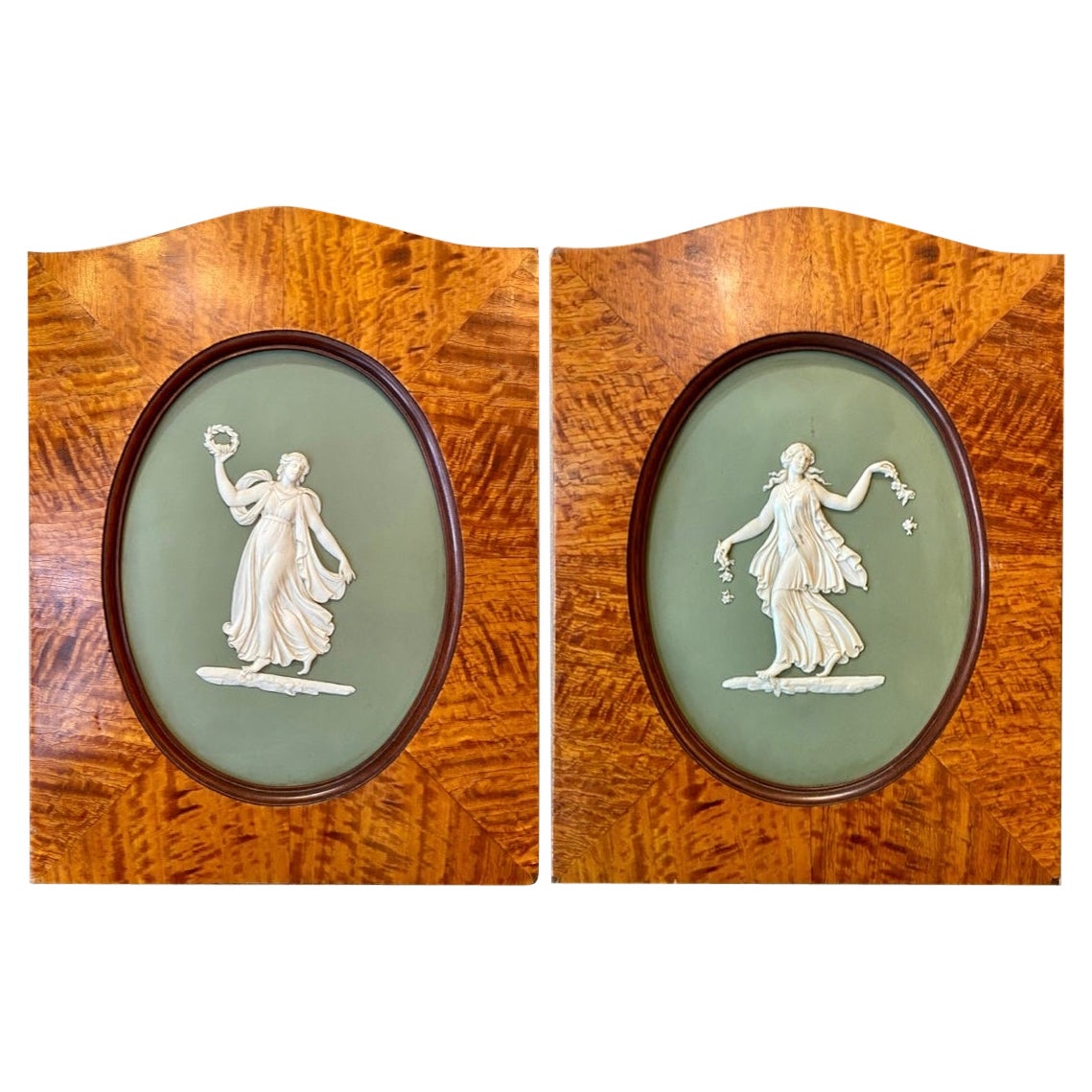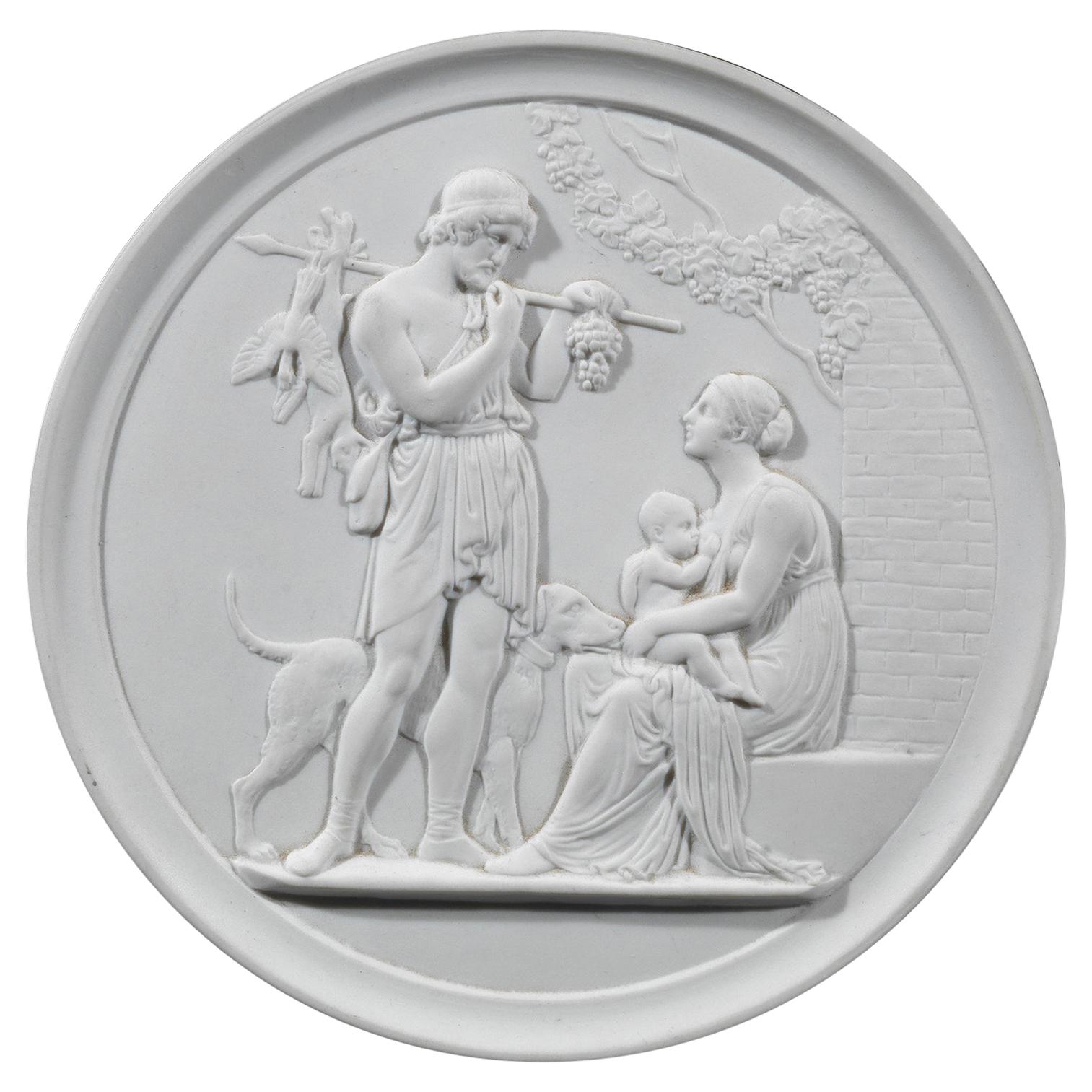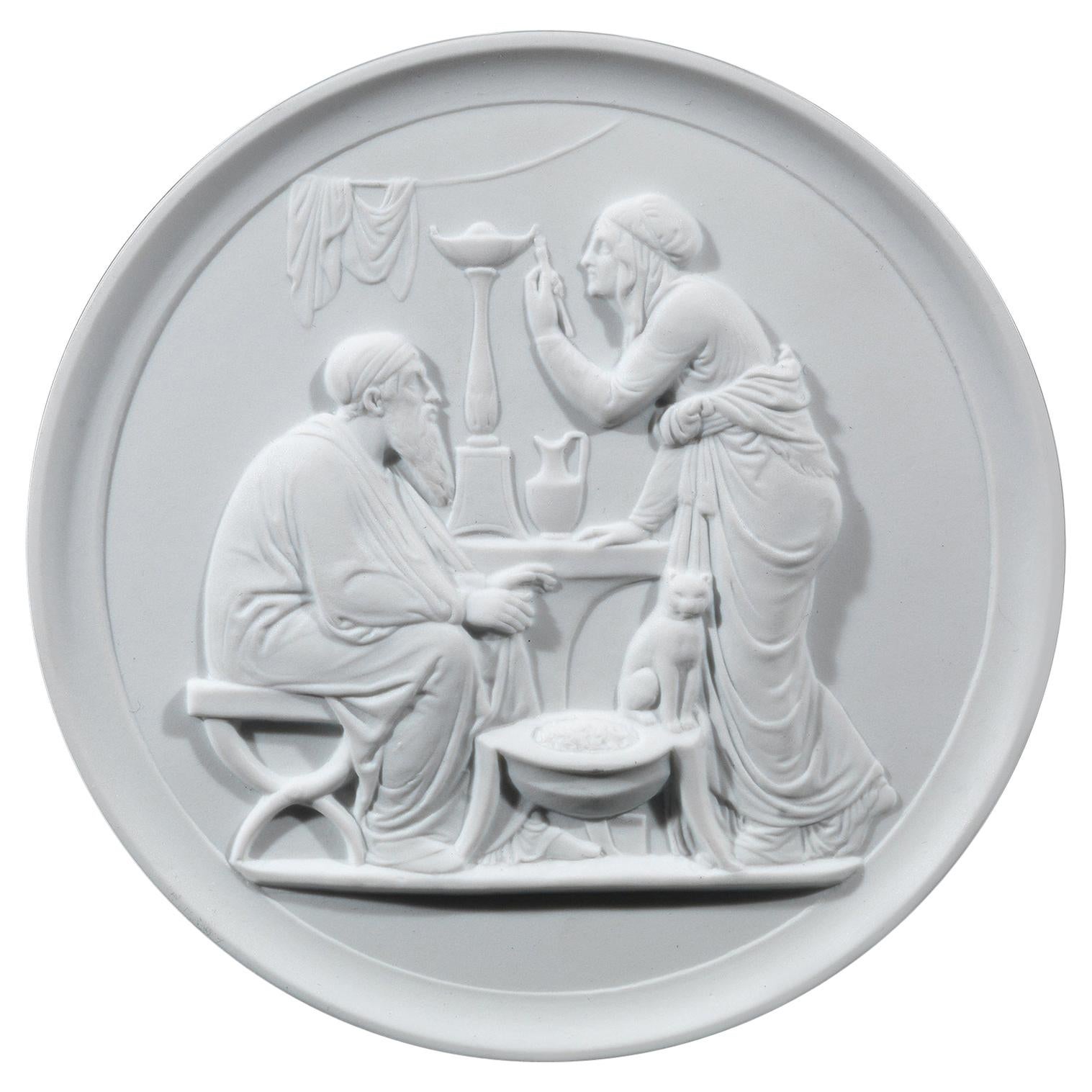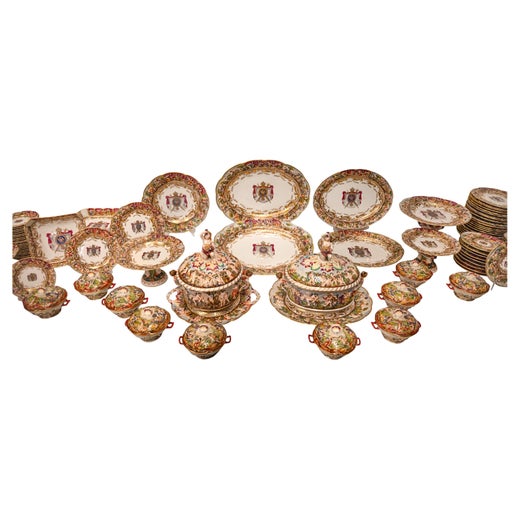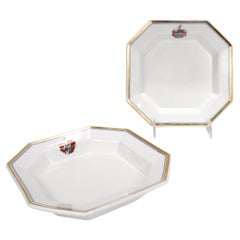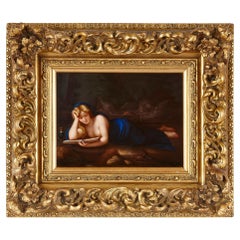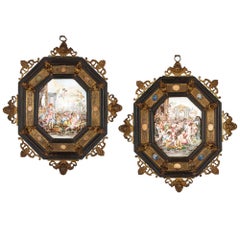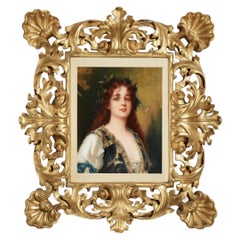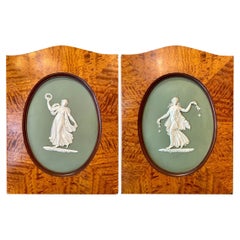Large Antique Capodimonte Porcelain Plaque of a Naiad or Water Nymph
About the Item
- Creator:Capodimonte (Manufacturer)
- Dimensions:Height: 18.5 in (46.99 cm)Width: 11.25 in (28.58 cm)Depth: 2 in (5.08 cm)
- Style:Renaissance (In the Style Of)
- Materials and Techniques:
- Place of Origin:
- Period:
- Date of Manufacture:Late 19th Century
- Condition:Wear consistent with age and use. Minor losses. There are a few chips to the back edges of the porcelain plaque and noticeable losses and significant in-painting to the gesso and gilding of the frame, some fine and light scratches here and there and other signs of light wear consistent with age.
- Seller Location:Philadelphia, PA
- Reference Number:Seller: DSA INV1stDibs: LU161024025473
Capodimonte
If success is measured by lasting name recognition, Capodimonte porcelain would seem to be in the same league as such makers as Meissen, Sèvres and Wedgwood. Early examples of Capodimonte lamps — as well as the Italian manufacturer’s celebrated porcelain vases, figurines and sculptures — can be hard to come by, but the best later pieces possess the same over-the-top charm.
The Real Fabbrica (“royal factory”) di Capodimonte hasn’t actually produced porcelain since the early 19th century, when Charles’s son Ferdinand sold it. Although secondary manufacturers have built upon the aesthetic and kept the name alive, some connoisseurs of the royal product feel these pieces should be labeled “in the style of” Capodimonte.
The timeline of royal Capodimonte porcelain is decidedly brief. From beginning to end, its manufacture lasted approximately 75 years. King Charles VII of Naples, who founded the manufactory in 1743, began experimenting with porcelain around 1738, the year he married Maria Amalia of Saxony. No coincidence there. His new bride was the granddaughter of Augustus the Strong, Elector of Saxony and founder of Meissen, the first European hard-paste porcelain manufactory. Her dowry included 17 Meissen table services.
Struck by porcelain fever, Charles built a dedicated facility on top of a hill (capo di monte) overlooking Naples. He financed expeditions to search for the right clay. He hired chemists and artisans to experiment. His earliest successes were small white snuffboxes and vases, although efforts soon progressed to full sets of tableware, decorative objects and stylized figurines of peasants and theatrical personalities.
In 1759, Charles succeeded to the throne of Spain. He moved the manufactory with him — including 40 workers and 4 tons of clay — and continued operations in Madrid. Twelve years later, his son Ferdinand IV, who inherited the throne of Naples, built a new factory there that became known for distinctly rococo designs.
The Napoleonic wars interrupted production, and around 1807, oversight of the royal factories was transferred to a franchisee named Giovanni Poulard-Prad.
Beginning in the mid-18th century, porcelain made by Charles’s factory was stamped with a fleur-de-lis, usually in underglaze blue. Pieces from Ferdinand’s were stamped with a Neapolitan N topped by a crown. When secondary manufacturers began production, they retained this mark, in multiple variations. The value of these later 19th- and 20th-century pieces is determined by the quality, not the Capodimonte porcelain marks.
Find antique and vintage Capodimonte porcelain for sale on 1stDibs.
- ShippingRetrieving quote...Shipping from: Philadelphia, PA
- Return Policy
More From This Seller
View AllEarly 20th Century Italian Rococo Revival Porcelain
Porcelain
Antique Late 19th Century Unknown Victorian Busts
Porcelain
Early 20th Century English Georgian Pitchers
Porcelain
Early 20th Century German Porcelain
Porcelain
Antique Early 19th Century Chinese Chinese Export Ceramics
Porcelain
Antique 1760s German Rococo Porcelain
Porcelain
You May Also Like
Antique 19th Century German Renaissance Porcelain
Porcelain, Giltwood
Antique 19th Century Italian Classical Roman Decorative Art
Lapis Lazuli, Ormolu, Bronze
Antique 19th Century German Decorative Art
Porcelain, Giltwood
Antique 19th Century English Decorative Art
Porcelain, Wood
Early 20th Century Danish Neoclassical Revival Porcelain
Porcelain
Early 20th Century Danish Neoclassical Revival Porcelain
Porcelain
